Eight ways to borrow to pay for disaster repairs
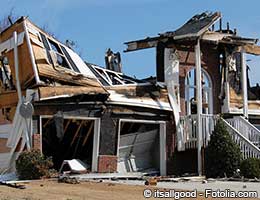
After a natural disaster, homeowners and renters often discover insurance doesn't pay for repairs of all of the damage to their dwellings and possessions.
Maybe you have uninsured damage because your home was flooded and you didn't have flood insurance. Or your homeowners insurance policy has a high deductible and you don't have the cash to pay it. Even if some renovation work is covered by insurance, you might find other problems that need addressing but are not reimbursable expenses.
Disaster survivors get loans from all kinds of sources, some obvious and some unexpected.
"The best thing you can do if you have to borrow money is to borrow it at the lowest possible interest rate with the best repayment terms," says Larry Rosenthal, CFP professional and president of Rosenthal Wealth Management Group in northern Virginia.
Here are eight sources for borrowing money to pay for uninsured expenses after a disaster, in rough order of least expensive to most expensive.
Loan from the Small Business Administration

If you are in a federally declared disaster area, you may be eligible for a disaster relief loan from the Small Business Administration. These SBA loans are available to homeowners and renters regardless of whether they own a business.
"Homeowners can borrow up to $200,000 in a low-interest loan to make repairs, and they can borrow an additional $40,000 to pay for personal property damage," SBA spokeswoman Carol Chastang says. Renters can borrow up to $40,000 to repair or replace personal property (such as furniture and appliances) lost or damaged as a result of the storm. Interest rates vary from 1.688 percent to 3.375 percent.
SBA disaster loans are available to cover anything not reimbursed by your insurance policy and can be repaid over as long as 30 years.
"The program doesn't have any income restrictions, but we do approve the loans on a case-by-case basis to determine whether the borrowers have the ability to comfortably repay this loan," Chastang says. The SBA's goal is to make a loan decision within 10 days of application, with a loan check arriving five days after the decision.
You can apply online at https://disasterloan.sba.gov/ela/ or call (800) 659-2955.
FHA 203(h) mortgage
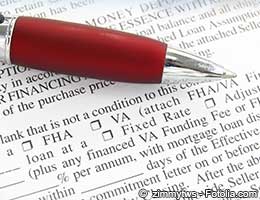
If your home is in a federally designated disaster area and has been damaged so badly it needs reconstruction or replacement, you can apply for a Federal Housing Administration Section 203(h) mortgage. The loans are available from any mortgage lender who offers FHA loans.
While these loans are similar to traditional FHA-insured loans, there are some differences.
Some requirements are the same for all FHA loans, such as:
Home equity loan
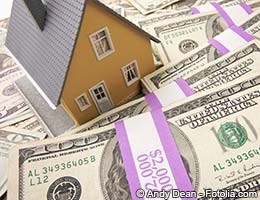
If you have a home equity line of credit, or HELOC, with an available balance, you can borrow the money for your home repairs.
"Mortgage customers who are current on their home equity line of credit will continue to have access to the funds," says Mark Pipitone, a spokesman for Bank of America. "In general, there are not restrictions on the way customers can use home equity lines of credit, so our existing HELOC customers may continue to access their lines of credit to use as they wish, including for repairs to a damaged home."
You may have more trouble if you attempt to apply now for a home equity loan or line of credit to pay for unreimbursed home repairs, because lenders typically require an appraisal of your current home value to estimate how much equity you have available. Until the damage has been repaired, the value will be lower.
Personal loan
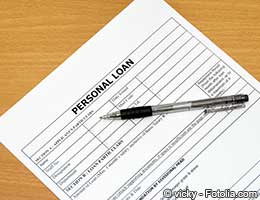
A personal loan, called a "signature loan" by many financial institutions, is generally available only to borrowers with good or excellent credit and often requires some form of collateral for an approval.
"Some people have as much as $30,000 in equity in their car if they have paid it in full, so they might qualify for a signature loan with their car as collateral," Rosenthal says. "Most banks require you to have some collateral such as a car or your home. You also have to demonstrate your ability to repay the loan with an income stream."
Pipitone says Bank of America's options for customers may include a personal loan or a credit line increase on their credit cards.
Borrow from your 401(k)
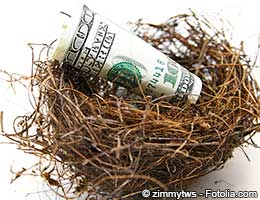
While the rules vary according to your employer's 401(k) plan, most people can borrow up to $50,000 or 50 percent of their vested balance, whichever is less, without paying an early withdrawal penalty.
"The borrower must repay the loan with interest within five years," Rosenthal says. "I'm not a big fan of borrowing against your retirement because you lose out on the growth in your account while you are repaying the loan."
Most employers deduct your payments directly from your paycheck, reducing your monthly cash flow. If you change employers, you may be required to repay the loan immediately.
Borrow against cash value insurance policy
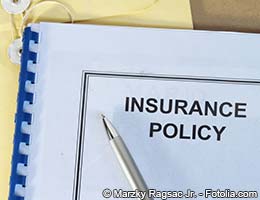
Rosenthal says many people are unaware of the cash value of their life insurance policies.
"Depending on the policy, you can just take out the money and not pay it back," he says. "The cash would just come out of the death benefit available to your beneficiaries."
He says some insurance policies require you to repay any withdrawal, but sometimes you can repay it without paying any interest on the debt.
"You should check on the rules associated with your individual life insurance policy to see if borrowing against it or making a withdrawal is an option," Rosenthal says.
Borrow from relatives
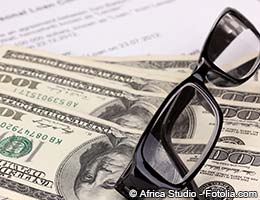
Family should be considered as a source of funds, but Rosenthal recommends carefully thinking about the individuals within your family before asking for a loan.
"It's completely individual, but we all know families that are OK with lending each other money and others that would never do it on principal," he says.
If you do borrow from family members, it's wise to put your repayment agreement in writing to avoid conflict later.
Use a credit card
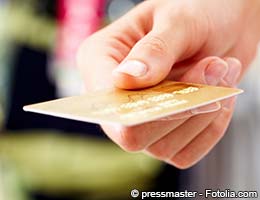
If you have plenty of available credit and a high limit on a credit card, you could charge your repair bills.
"A credit card should be absolutely your last resort unless you have a zero interest credit card," Rosenthal says.
Not only will you typically owe more in interest on a credit card than on other types of financing, you also potentially lower your credit score with the overuse of credit. If your credit score dips too low, you could end up paying more for other financing or being unable to qualify for financing in the future.
Source: http://www.bankrate.com/finance/weather/natural-disasters/loans-uninsured-disaster-repairs.aspx
nhl Alexis Wright Zumba binder full of women Microsoft Surface Candy Crowley binders of women Alexis Wright
No comments:
Post a Comment
Note: Only a member of this blog may post a comment.